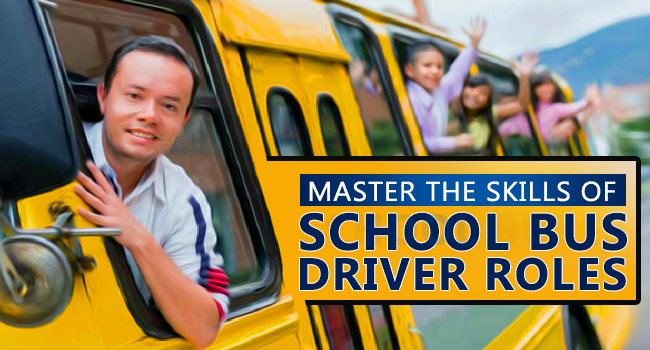Bus transportation is considered as one of the safest modes of transit for students. But, a fire resulting from a collision or failure of a component puts lives at risk and can have an enormous impact on operational costs as well.
There are diverse reasons that can cause fire in a school bus – due to mechanical failures, wires got loose and rub against engine parts, overload of circuit boards, explosion of tires or even leaks that release inflammatory fluids.
Read Also: 10 School Bus Pre-Trip Inspection Checklist
In most cases, school bus fires start in the engine area, running gear, or wheel area of the vehicle. Studies analyze that the most frequent cause of ignition was failure of equipment or heat source.
Along with transporting students safe to and from school, school bus drivers and attendees may have to handle even certain emergency situations such as a bus crash, accident or fire.
In such a situation, they are responsible to supervise all students and follow procedures for the appropriate release of students
According to the U.S. government statistics, on an average – 379 school bus fires happen each year, though deaths are rare from such fire incidents.
Drivers in school bus must be well trained by the school district board to take immediate action, if they doubt any smoke or fire in any portion of the bus or even if the bus is near an existing fire and they are unable to move the bus away.
In such a scenario, take quick actions such as
- Stop the bus in a safe area
- Vacate the bus
- Call Bus Dispatch number
- Use fire extinguisher
Evacuate the bus
Organize students for a transfer to another school bus. School bus fire evacuation drills and training is important for drivers to rescue students from a burning bus.
Such drills can also help students to stay prepared in safely escaping from the bus. Students will be able to know when and how to evacuate as well as the relevance of evacuating in an orderly way.
Read Also: School Bus Transportation Security – 18 Practices to Follow
To evacuate the bus, drivers should –
- Call for bus dispatch, shut off motor, set brake and remove key
- Decide the right evacuation route, which ever you think is appropriate – let that be exit door, front or side doors, roof hatch or even windows.
- Ensure that the attendees are helping students to get off safely and assemble everyone together
- In case of time shortage, instruct students to leave their bags and other personal belongings on the bus and make sure that everyone has left
- Leave the bus only after all the students leave and remember to take your cell phone as well as the first aid kit
- Follow the correct student release procedures and do not re-enter the bus until recommended by the authorities
- Follow correct transfer procedures, in case if you are transferring students to another bus. Ask them to move to that bus in an orderly manner, drivers should stay alert until the transfer is complete.
- Designate older students to help the young ones in evacuation
Use fire suppression systems
Fire suppression systems can help to extinguish fire immediately. Such advanced systems release a mist or powder to extinguish the fire, when the temperature reaches a certain level.
Installation and testing of such fire suppression systems in engine compartments is now getting mandatory in buses as well as coaches.
These systems –
- Provide extra time for students with disabilities to leave the bus
- Can put out fire for rear-engine buses, even before driver might be aware of the incident
Maintenance staff and supervisors should also undergo thorough training during installation of such systems.
Read Also: School Bus Drivers Training – 10 Tips For City Driving
School districts can take certain steps to prevent such incidents such as replacing old buses with new ones, either by purchasing them or by getting benefits from a lease program.
Drivers should be recommended to inspect their school buses daily before every trip, check for leaks and make sure that all exit doors open perfectly, making the bus ready for any such emergency situations.











